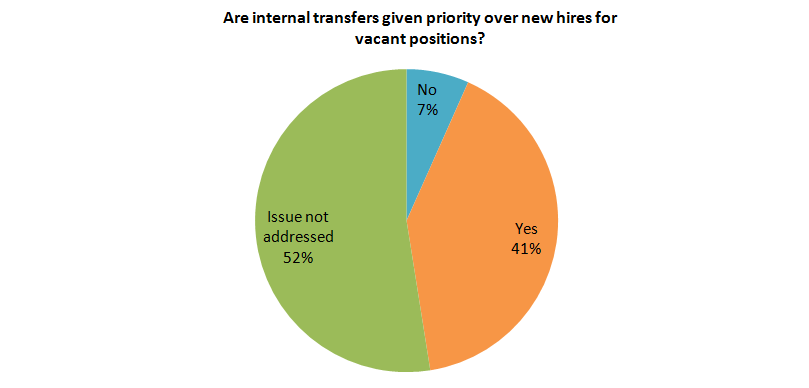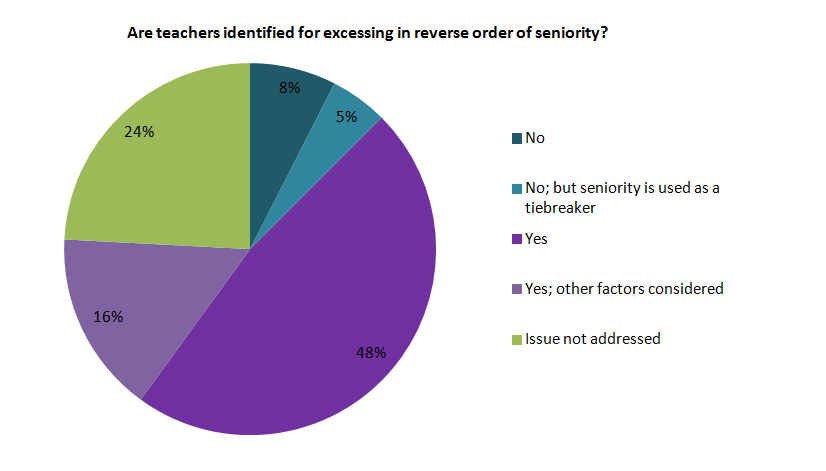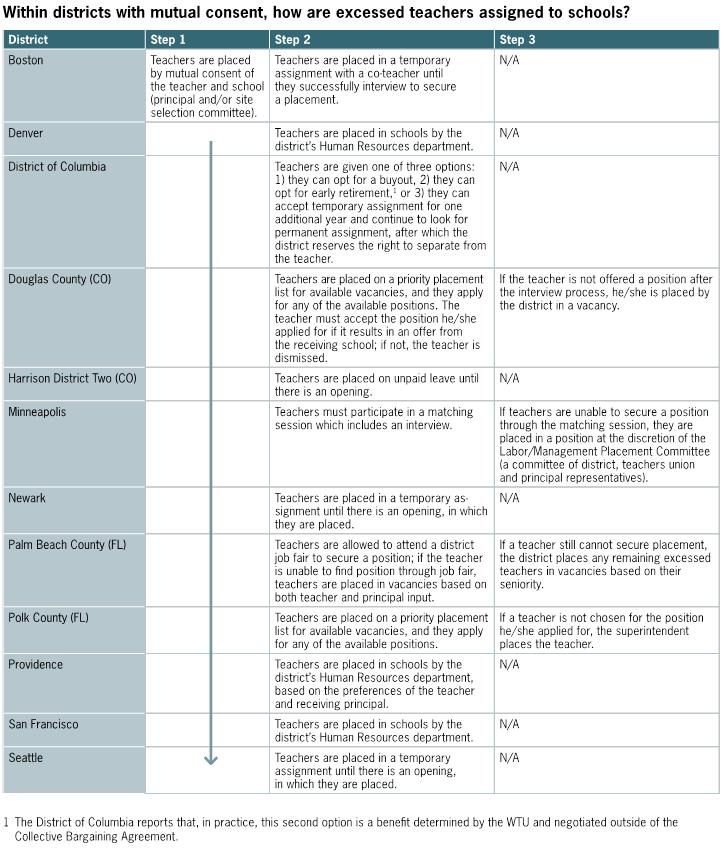District Trendline, previously known as Teacher Trendline, provides actionable research to improve district personnel policies that will strengthen the teacher workforce. Want evidence-based guidance on policies and practices that will enhance your ability to recruit, develop, and retain great teachers delivered right to your inbox each month? Subscribe here.
Whether by choice or
circumstance, teachers change schools within districts regularly. This month’s Trendline will examine what teacher
transfers and excessing looks like in the 118 districts in the Teacher
Contract Database.
Transfers
Voluntary transfers are often initiated
by teachers for personal or professional reasons. Teachers may want to transfer
to another school for a wide variety of reasons, such as philosophical
differences with a principal or a desire to teach in a school closer to home.
For most teachers, there’s little risk in seeking a voluntary transfer: until a
transferring teacher has been assigned to a new position, he or she does not
give up the old one.
In some districts,
teachers who voluntarily transfer are given priority during the hiring process.
While about half of the districts in the Teacher
Contract Database do not address this issue in contract and/or board
policy, 41 percent of districts give priority to internal transfers for vacant
positions.

The eight districts that do not formally
prioritize internal transfers over new hires for vacancies are Burlington (VT),
Dayton (OH),
Fargo,Fulton County (GA),
Nashville,
Newark,
Prince William County
and St. Paul.
The 49 districts that do give
preference to internal transfers for vacancies sometimes face criticism around
this practice because this prioritization can have the unintended consequence
of prolonging the hiring process, pushing potential new hires out of districts’
human capital pipeline. Some districts try to avoid this challenge by getting a
head start on the hiring process and/or limiting the time in which transferring
teachers receive priority.
Boston,
for example, provides a limited window of 10 days in which permanent teachers who
are transferring can have priority in applications. Duval County (FL)
gives priority to internal transfers until May 1. Voluntary transfers in Los Angeles
only receive preference until April 15. In San Diego,
internal transfers receive “priority consideration” for vacancies;
however, in priority schools, positions not filled by February, relatively
early in the hiring cycle, are opened to outside candidates.
Excessing
As opposed to voluntary transfers,
excessing is a process where teachers are involuntarily forced to move schools
because they no longer have a position in their current school. Teachers are
excessed when a school has to cut or change the composition of staff due to any
number of issues including, but not limited to, a drop in student enrollment,
budgetary cuts or programmatic changes.
Districts negotiate a number of ways to
identify teachers for excessing, but the most common method found in collective
bargaining agreements is still seniority. Of the districts in the Teacher
Contract Database, nearly half (48 percent) use district-level seniority as the
primary factor for excessing teachers. Another 16 percent use seniority in
addition to other factors, like school need or teacher performance.
Only 13 percent of districts
do not use seniority as either a primary or significant factor when excessing;
of these districts, five percent use seniority as a tie-breaker if all other
characteristics between two teachers are equal.

West Ada
(ID), one of the districts that
use seniority to identify teachers for excessing, utilizes both school- and
district-level seniority in the excessing process. In cases where there is a
surplus of teachers within one school, West
Ada teachers are identified for excessing based on building seniority; district
seniority is used as a tiebreaker if all other factors are equal.
Placement after excessing
Usually, excessed teachers are not out
of a job, as the district is contractually obligated to find them a new
position.
Mutual consent, a process in which
teachers and principals mutually agree on a teacher’s placement within a school
through an interview process, is practiced in 12 districts in the Teacher
Contract Database. Of those, Douglas County (CO)
and Boston allow only tenured
teachers to be a part of the mutual consent process.
In 14 districts, excessed teachers are placed
in schools in order of their seniority based on their preferences. In the five
districts where excessed teachers are placed in schools based on multiple
factors, four of those districts (Cleveland,
Jefferson County (KY),
Kansas City (MO)
and Oklahoma City)
use seniority as one of the factors for assigning excessed teachers to new
schools.

When mutual consent is used
to place excessed teachers into new positions, as it is in 12 districts in the
Teacher Contract Database (Boston,Denver, District of
Columbia, Douglas County (CO), Harrison
District Two (CO), Minneapolis, Newark, Palm Beach
County (FL), Polk County
(FL), Providence, San
Francisco and Seattle) there are times when teachers are left without a
match. The policies for what happens to those teachers at that point in the process
are listed in the table below.

